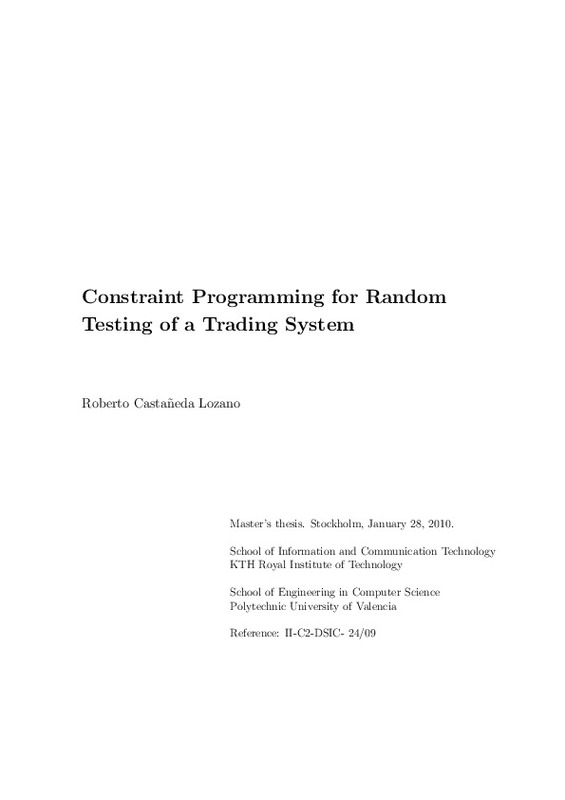JavaScript is disabled for your browser. Some features of this site may not work without it.
Buscar en RiuNet
Listar
Mi cuenta
Estadísticas
Ayuda RiuNet
Admin. UPV
Constraint programming for random testing of a trading system
Mostrar el registro completo del ítem
Castañeda Lozano, R. (2010). Constraint programming for random testing of a trading system. http://hdl.handle.net/10251/8928.
Por favor, use este identificador para citar o enlazar este ítem: http://hdl.handle.net/10251/8928
Ficheros en el ítem
Metadatos del ítem
| Título: | Constraint programming for random testing of a trading system | |||
| Autor: | Castañeda Lozano, Roberto | |||
| Director(es): | ||||
| Entidad UPV: |
|
|||
| Fecha acto/lectura: |
|
|||
| Resumen: |
Financial markets use complex computer trading systems whose failures can
cause serious economic damage, making reliability a major concern. Automated
random testing has been shown to be useful in nding defects in these ...[+]
|
|||
| Palabras clave: |
|
|||
| Derechos de uso: | Reconocimiento - No comercial - Compartir igual (by-nc-sa) | |||
| Editorial: |
|
|||
| Titulación: |
|
|||
| Tipo: |
|
recommendations
Este ítem aparece en la(s) siguiente(s) colección(ones)
-
ETSINF - Trabajos académicos [5160]
Escola Tècnica Superior d'Enginyeria Informàtica







